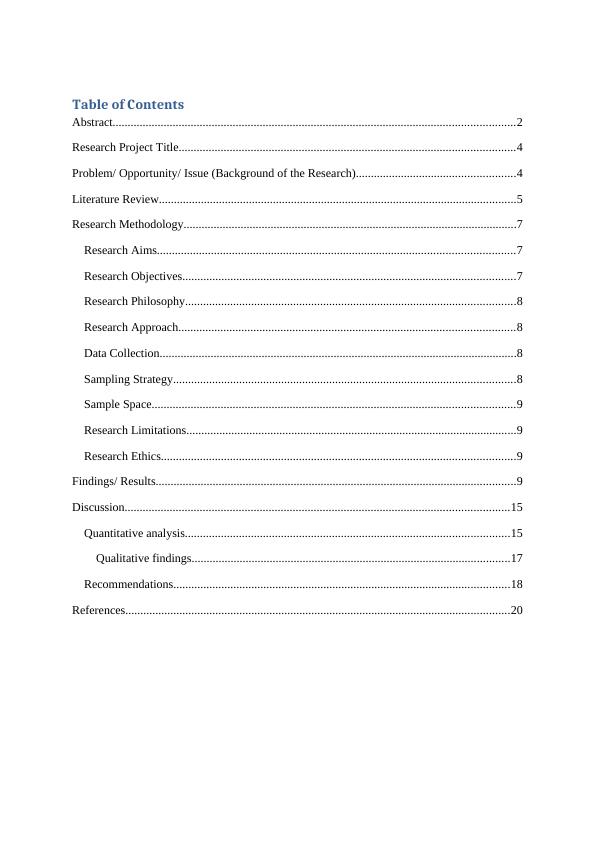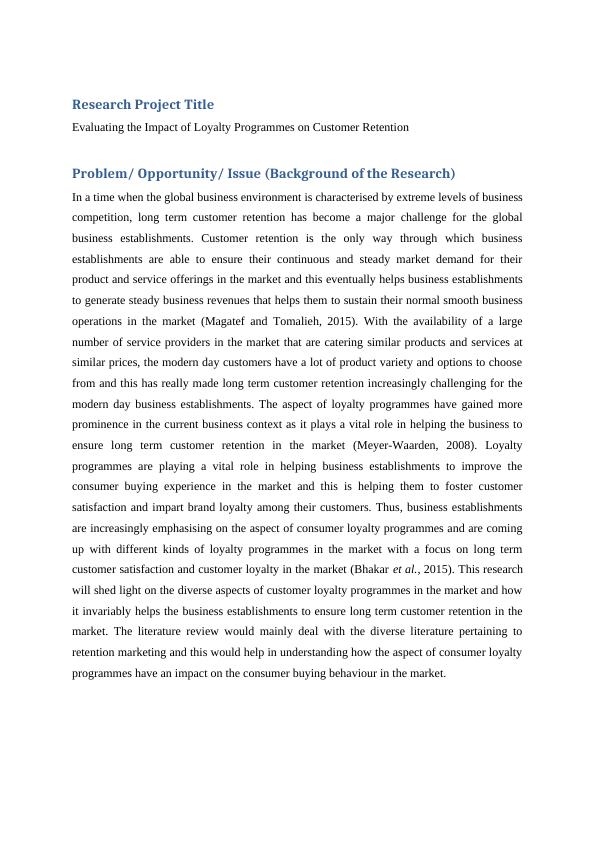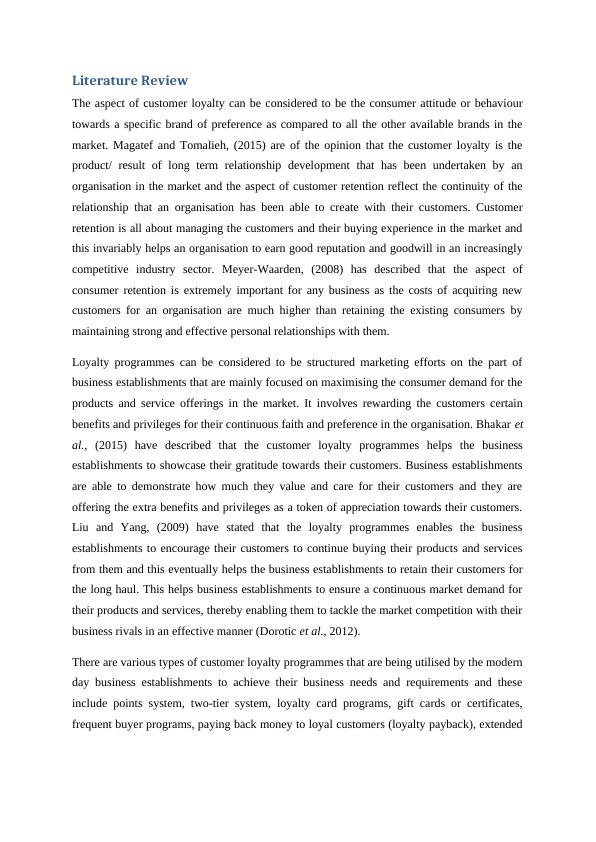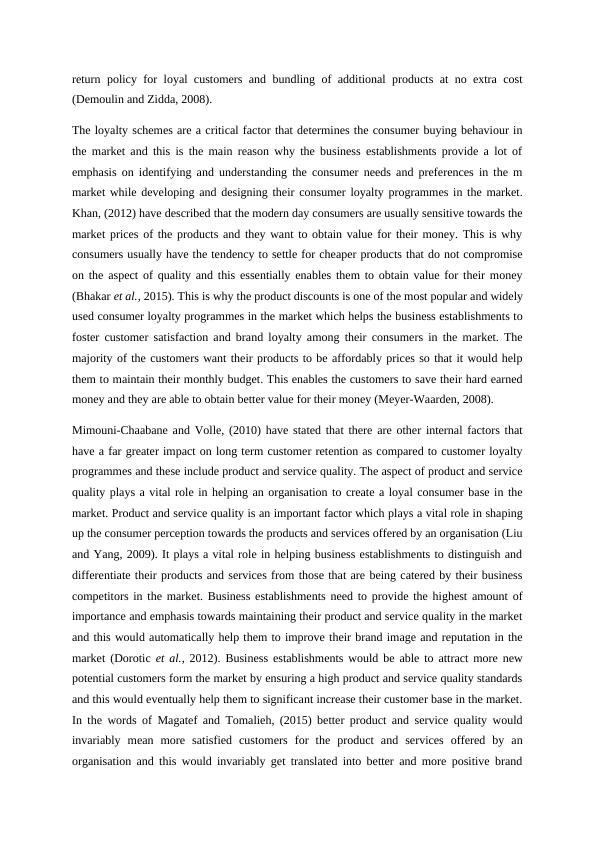Evaluating the Impact of Loyalty Programmes on Customer Retention
This research proposal aims to investigate the impact of customer loyalty programmes on customer retention in the modern business world, considering factors such as customer service and quality of products. The research will evaluate the effectiveness of loyalty programmes over time and their direct impacts on customers. The objective is to provide recommendations for retailers with existing loyalty schemes and those planning to introduce new schemes based on customer demand.
Added on 2023-05-28
About This Document
Evaluating the Impact of Loyalty Programmes on Customer Retention
This research proposal aims to investigate the impact of customer loyalty programmes on customer retention in the modern business world, considering factors such as customer service and quality of products. The research will evaluate the effectiveness of loyalty programmes over time and their direct impacts on customers. The objective is to provide recommendations for retailers with existing loyalty schemes and those planning to introduce new schemes based on customer demand.
Added on 2023-05-28
End of preview
Want to access all the pages? Upload your documents or become a member.






